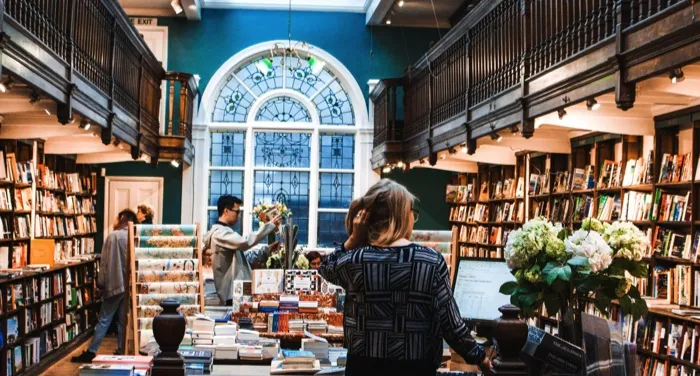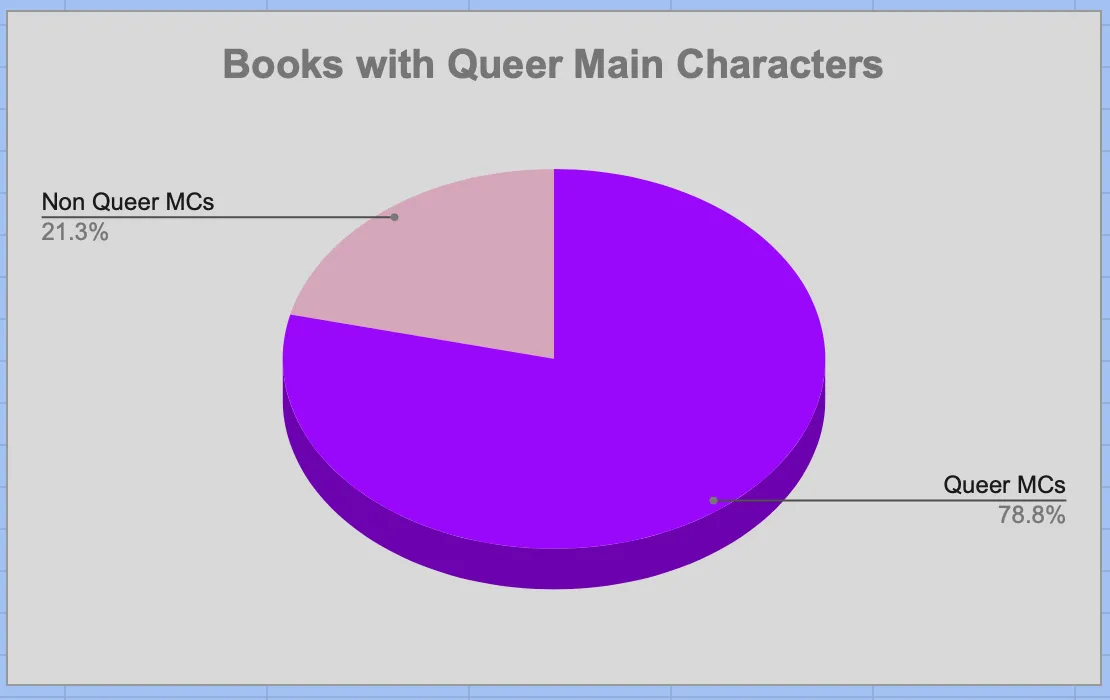
Sometimes I Choose to Read Books About Straight People
Here’s something that’s become a regular occurrence in my reading life: A friend raves about a book. Someone posts a glowing review on Bookstagram. I see an intriguing book in a bookstore window or an online list. So I investigate further, and discover, to my dismay, that the book in question is not queer. And then it happens: I lose all interest. I just can’t be bothered. It’s a gut instinct, an immediate physical response. I can feel myself getting prickly. “Okay,” I tell the book (in my head, obviously), “make your argument. What do you have that’s so special? Convince me you’re worth my time, and you’d better make it good.”
I do not have anything against straight books. I’ve simply arrived, finally, at the intersection of choice and abundance. It’s been a long time coming.
As a teenager and young adult, when I was coming into myself as a reader, there simply weren’t as many queer books available as there are today. Looking back at the books I read in the late nineties and early-to-mid aughts, I’m shocked by how few of them are queer. I distinctly remember what it felt like when I stumbled upon a queer book; there were so few of them that finding one was An Event. There was a minor lesbian side character in Mercedes Lackey’s Heralds of Valdemar series, one of the first fantasy series I truly fell in love with, and I remember the jolt of excitement I got whenever she was mentioned. I remember being completely blown away by Stone Butch Blues and A Home at the End of the World — I was amazed that books like these even existed, books about messy, complicated relationships between queer people. I clung to those books like my life depended on them. If I could have, I would have spent all of my teens and twenties reading exclusively queer lit.
But I didn’t grow up in the Golden Age of Queer Lit. And I didn’t know where to find the queer books that did exist. The internet was still a baby. I didn’t have the bookish community I have today. So I fell in love with reading by reading about straight people. For years, straight books were the default. When I wanted an intergenerational family saga, I picked up a book about straight people. When I wanted a space opera, I picked up a book about straight people. When I wanted a magical adventure, I picked up a book about straight people. When I wanted a love story, I picked up a book about straight people.
Let’s cut, for a moment, to the year 2022, in which I, a 36-year-old woman, can read whatever the hell I want, and reading whatever the hell I want looks like this:

It has taken me literal decades to get here. I attribute a lot of this shift to queer romance, which I started reading in 2016. I had never read romance before (maybe because I wrongly assumed it was all straight), and it was the first genre I read where I gave myself permission to read exclusively queer books. I made a conscious decision when I picked up my first romance novel that I wasn’t going to read any books about straight couples. What a wild, enormous thing, to choose queer books so brashly, so loudly! Queer romance was the gateway that allowed me to start choosing more and more queer books in other parts of my reading life. Once I realized how good it felt to read stories that centered the experiences of queer people, I didn’t want to go back. It was liberating.
The other miraculous thing that’s happened, of course, is the sheer abundance of queer lit that’s being published every year. I am a curious person and have eclectic reading taste. It makes sense that I read a lot of straight books in my twenties, because so many of the genres I wanted to read — contemporary fiction, introspective character studies, essay collections, historical sagas — were just not very queer.
I do not have that problem anymore. When I’m in the mood for an intergenerational family saga, I pick up a book about queer people (The Thirty Names of Night). When I’m in the mood for a space opera, I pick up a book about queer people (The Long Way to a Small, Angry Planet). When I want a magical adventure, I pick up a book about queer people (Finna). When I want a love story, I pick up a book about queer people (Skye Falling). I also pick up books about queer people when I’m in the mood for funny essays (Hola Papi), serious essays (Brown, White Black), memoir (Fairest), nature writing (Borealis), mysteries (Dead Dead Girls), contemporary fiction (With Teeth), short stories (Afterparties), historical fiction (Last Night at the Telegraph Club), self-help (Special Topics in Being a Human), or WTF-did-I-just-read books (My Volcano).
So, with all of this glorious choice, the question remains: what does it take to get me to actually read a book about straight people? What does the proverbial book in the widow have to say to convince me it’s worth my time?
There’s not one clear answer. For starters, I read a lot more non-queer nonfiction than non-queer fiction. I am curious about a lot of things, many of which have nothing to do with queerness. As a human who lives in the world and cares about how I move through it, I look for books by and about people with vastly different life experiences from mine. I like books that challenge me and shake up my worldview, and many of those books aren’t queer.
Sometimes a book comes highly recommended by someone whose book taste overlaps heavily with mine. Sometimes I’m just in the mood for a book about wool (Vanishing Fleece) or an epic novel about the history and future of the internet (The Immortal King Rao). I often seek out books by authors I love, or books published by indie presses I love, even when they’re not queer. That was the case with two of the best books I’ve read this year: The Swimmers and When the Whales Leave.
It used to be that choosing to read a queer book was an aberration, a thing that happened every now and then, a noteworthy event. I had to make a concerted effort. I couldn’t browse my own bookshelves for my next read, debating between six books, in different genres, all queer. Now, in the Golden Age of Queer Lit, queer books are my everyday bread and butter. Every time I think about this I get a little thrill of happiness and gratitude. But the mere fact of all of these wonderful queer books isn’t the best part of being a queer reader in 2022. The best part is that I get to choose when to read about straight people, on my own terms.
I choose to read non-queer books all the time, happily. I read them because I want to. It is my choice to deliberately venture out of the pool of queer lit, because the pool of queer lit is so big now that I don’t have to leave it unless I want to. Reading about straight people used to feel like a burden. Now the choice to do has become a joy.
Cut back to 2003, the year when I, a 17-year-old baby gay activist and budding book nerd, fell head-over-heels for Stone Butch Blues. It was one of three queer books I read that year. I think about that girl — queer and proud and fierce and lonely — and I know there’s a part of me that will always choose to read queer books for her. I think about how much she would have loved the jubilant queer community in The Heartbreak Bakery and the dark plant magic in This Poison Heart. I think about how she would have seen herself in the wonderfully grumpy lesbian main character in Cheer Up. I think about how much books about queer women like A World Between and Butter Honey Pig Bread would have meant to her.
I can’t go back and give those books to the girl I was. But I can go on choosing queer books and reveling in queer abundance. I can be the kind of reader that girl never got the chance to be, and that’s a kind of healing.








